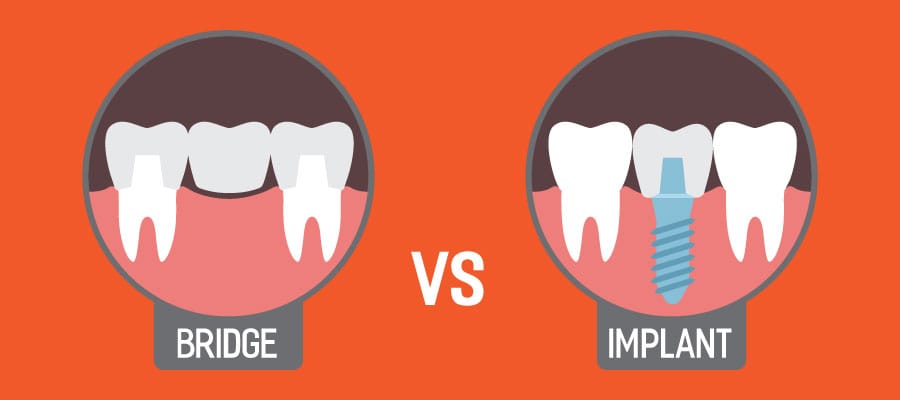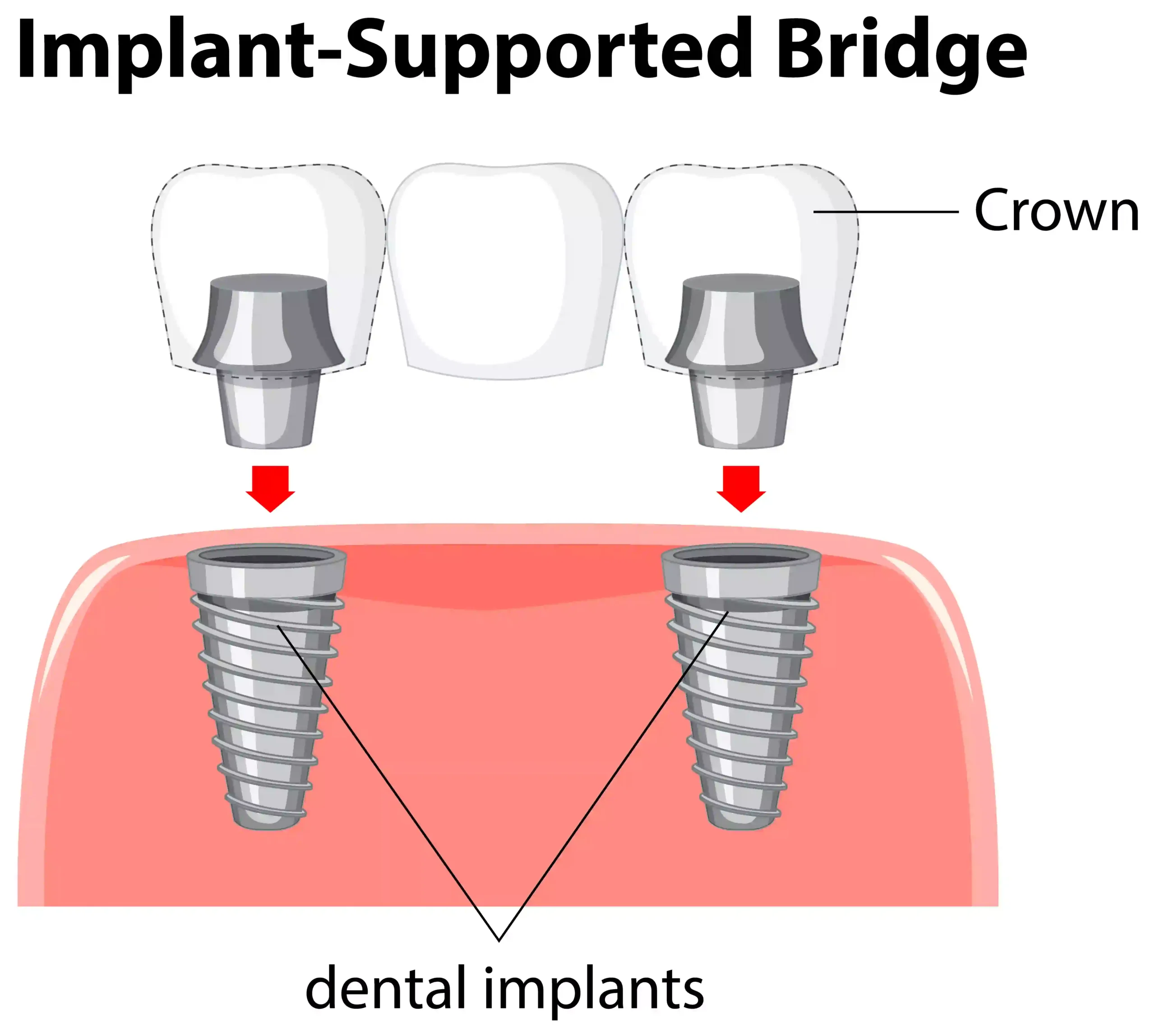What Is Better, Dental Bridge Or Implant? Comparison Guide

When it comes to replacing missing teeth, two popular options are dental bridges and implants. Both have their own set of advantages and disadvantages, and the choice between them depends on various factors, including the patient’s oral health, budget, and personal preferences. In this comprehensive guide, we will delve into the details of both dental bridges and implants, exploring their benefits, drawbacks, and suitability for different individuals.
Introduction to Dental Bridges

A dental bridge is a fixed appliance that is used to replace one or more missing teeth. It consists of a false tooth, known as a pontic, which is attached to the surrounding teeth using crowns or abutments. Dental bridges can be made from a variety of materials, including porcelain, ceramic, and metal. The main advantage of dental bridges is that they are a more affordable option compared to implants, and they can be completed in a relatively shorter period.
However, dental bridges also have some limitations. They require the adjacent teeth to be prepared, which can lead to a loss of tooth structure and potentially compromise the health of these teeth. Additionally, bridges may not be as durable as implants and may need to be replaced after 10-15 years.
Introduction to Dental Implants

Dental implants, on the other hand, are a more modern and revolutionary approach to tooth replacement. An implant is a titanium post that is surgically inserted into the jawbone, where it fuses with the surrounding bone tissue to create a strong and stable foundation for the artificial tooth. The crown or prosthetic tooth is then attached to the implant, resulting in a natural-looking and functioning tooth.
The benefits of dental implants are numerous. They are a more permanent solution, with a success rate of over 95%, and they can last for decades with proper care. Implants also preserve the surrounding bone and tissue, preventing the sunken appearance that can occur with missing teeth. Furthermore, they do not require the adjacent teeth to be prepared, making them a more conservative option.
However, dental implants are generally more expensive than bridges, and the process of getting an implant can take several months to complete. Additionally, not everyone is a suitable candidate for implants, as they require a sufficient amount of bone density and a healthy immune system.
Comparison of Dental Bridges and Implants
| Characteristics | Dental Bridges | Dental Implants |
|---|---|---|
| Cost | Less expensive | More expensive |
| Procedure Time | Faster completion | Longer completion time |
| Durability | May need replacement after 10-15 years | Can last for decades |
| Adjacent Teeth Preparation | Requires preparation of adjacent teeth | Does not require preparation of adjacent teeth |
| Bone Preservation | May lead to bone loss | Preserves surrounding bone and tissue |
| Success Rate | Lower success rate | Higher success rate |

Factors to Consider When Choosing Between a Dental Bridge and Implant
When deciding between a dental bridge and an implant, there are several factors to consider. These include:
- Budget: If cost is a concern, a dental bridge may be the more affordable option.
- Time: If you need a quicker solution, a dental bridge may be completed faster.
- Oral Health: If you have a healthy immune system and sufficient bone density, an implant may be the better choice.
- Lifestyle: If you are looking for a more permanent and low-maintenance solution, an implant may be preferable.
- Personal Preferences: If you value the natural look and feel of a tooth, an implant may be the better option.
Real-Life Scenarios and Case Studies

To illustrate the differences between dental bridges and implants, let’s consider some real-life scenarios:
- Scenario 1: A 30-year-old individual with a missing front tooth due to an accident. In this case, a dental implant may be the preferred option, as it can provide a natural-looking and functioning tooth that can last for decades.
- Scenario 2: A 60-year-old individual with multiple missing teeth and limited budget. In this case, a dental bridge may be a more affordable option, although it may not be as durable as an implant.
- Scenario 3: A 40-year-old individual with a history of periodontal disease and limited bone density. In this case, a dental bridge may be the better option, as implants require sufficient bone density to be successful.
FAQ Section
What is the average cost of a dental bridge?
+The average cost of a dental bridge can range from $500 to $1,500, depending on the type of materials used and the location of the teeth being replaced.
How long does it take to get a dental implant?
+The process of getting a dental implant can take several months to complete, including the initial consultation, surgery, and follow-up appointments.
Can I get a dental implant if I have a history of periodontal disease?
+It depends on the severity of the periodontal disease and the overall health of your mouth. Your dentist or implant specialist can assess your individual situation and determine if an implant is suitable for you.
How do I care for my dental bridge or implant?
+Proper care for your dental bridge or implant includes regular brushing and flossing, as well as regular dental check-ups to ensure the health and stability of the tooth replacement.
Can I get a dental bridge or implant if I have a limited budget?
+Yes, there are options available for individuals with limited budgets. Your dentist or implant specialist can discuss financing options and help you find a solution that fits your needs and budget.
In conclusion, the choice between a dental bridge and an implant depends on a variety of factors, including budget, oral health, and personal preferences. By considering these factors and weighing the advantages and disadvantages of each option, you can make an informed decision that meets your unique needs and circumstances. Whether you choose a dental bridge or an implant, with proper care and maintenance, you can enjoy a healthy, functional, and beautiful smile for years to come.

